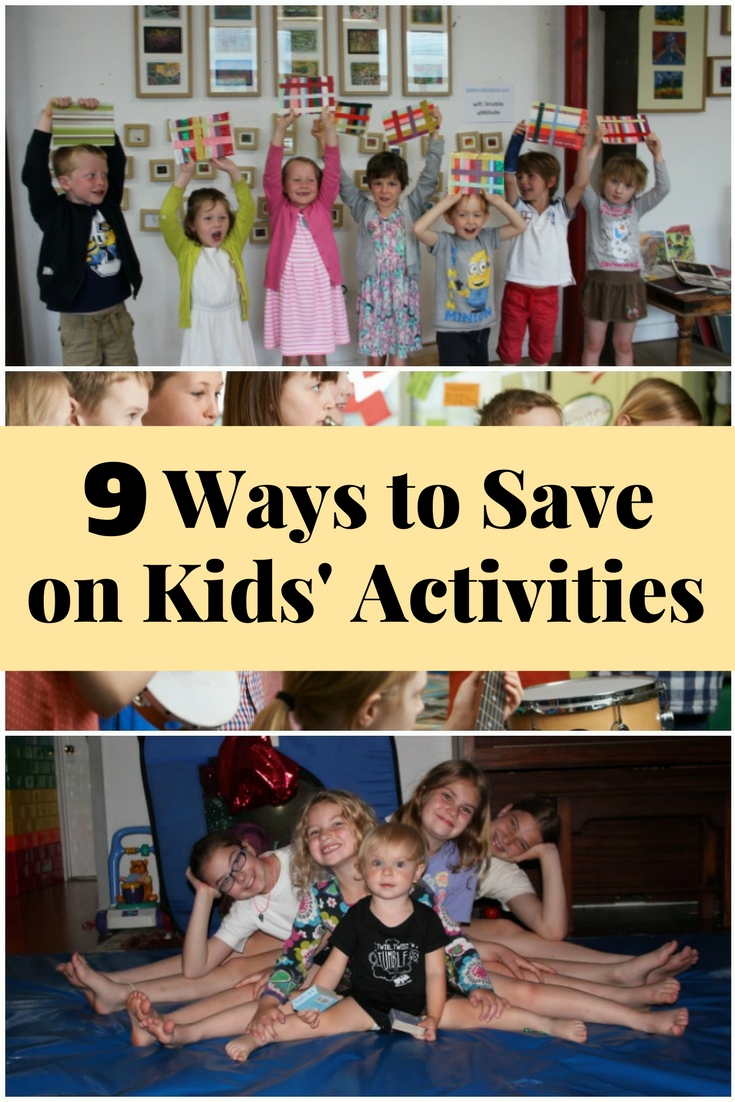 Oh, boy, kids are expensive, aren't they? Not only do they require food and clothes, but they also get bored quite easily. And, let's face it: parents appreciate sending their youngsters to an activity that will use up all their exuberant energy. However, the cost of enrollment fees, gear, uniforms, and so on can really add up. If you're anything like me, finding ways to save on kids' activities is a must. How can your kids keep doing the things they love even as you save for their college tuition? Here are nine frugal tips for keeping down activity costs.
Oh, boy, kids are expensive, aren't they? Not only do they require food and clothes, but they also get bored quite easily. And, let's face it: parents appreciate sending their youngsters to an activity that will use up all their exuberant energy. However, the cost of enrollment fees, gear, uniforms, and so on can really add up. If you're anything like me, finding ways to save on kids' activities is a must. How can your kids keep doing the things they love even as you save for their college tuition? Here are nine frugal tips for keeping down activity costs.
-
Limit the Calendar

Image source: pinterest.com The list of programs available to children is seemingly endless, and many kids want to try them all. Obviously, you can't do that, but you could probably fit several into your schedule at a time if you really wanted to. That level of activity might burn you out, and burn a hole in your pocketbook too. Consider paring back to just one activity per kid at a time.
-
See What the School Offers

Image source: sittercity.com Your child's school probably has a vast lineup of activities for kids. These may include clubs, sports teams, and after-school enrichment programs. A lot of them may be free or lower-cost than outside programs. For example, if your child joins the school band, you will probably have to provide the instrument, but you won't have to pay for the lessons.
-
Join Group Sessions
Image source: ocmomblog.comWhen I considered private swim lessons for my kids, I found that I could enroll my children in a 10-session group program for about the same cost as two private lessons. This principle generally applies across the board: Group lessons are significantly more reasonable than private ones. As an added bonus, group programs offer children the opportunity to make new social connections.
-
Look for Multiple Child Discounts
Some organizations will offer a discount to two or more children from the same family who participate in their program. If you have multiple kids who are interested in the same type of sport, class, or camp, look around for a program that will give a family discount. Even if you don't see an official multiple-child policy, it never hurts to ask.
-
Sign Up for Short-Term Workshops
Image source: globearts.org.ukShort-term programs allow kids to try out a variety of activities without a big investment of time or money on your part. These might be super short-term, such as a two-hour afternoon program, or longer, like an eight-week session. Check libraries, park districts, children's museums, and community centers for programs like these.
-
Find Secondhand Gear
Image source: moneycrashers.comPurchasing all-new equipment can get awfully pricey, but families whose kids have outgrown their gear or have moved on to a new hobby are often willing to selling their stuff for cheap. Check online forums, bulletin boards at your program center, and secondhand shops for deals on used equipment. Renting equipment is another option if they are only needed short-term.
-
Trade Services

Image source: teacher.org This approach won't work for everyone, but if you have a valuable skill that someone else would appreciate, see if you can trade services in exchange for your children's activities. This might come in the form of doing work, such as cleaning or paperwork, for the organization. You might also have a skill of your own that you could teach kids. For example, you can give art lessons to the piano teacher's kids, and she instructs yours in music. I even know of families who were able to negotiate reduced dance lessons by babysitting the teacher's kids while she was in class.
-
Help with Fundraisers

Image source: dailyheraldtribune.com Group fundraisers are in place to help offset the costs of teams and activities. Your participation helps keep costs down for every family, including your own. As an added bonus, fundraisers allow community members the opportunity to invest in youth development, and by participating, children develop a sense of ownership.
-
Ask for Experience Gifts

Image source: takelessons.com Grandparents may be interested in helping to pay for children's activities, especially when you explain that enthusiasm for a toy will fade but music lessons will enrich a child's life long-term. This year, for birthday or holiday gifts, ask family members to pitch in toward programs or lessons.
Has this list given you new ideas for saving money on your children's programs? For my family, group sessions and multiple-child discounts make activities feasible. What money-saving tips would you add to the mix? Let us know below. And, as always, if you've found good ideas here, be sure to share the article.



